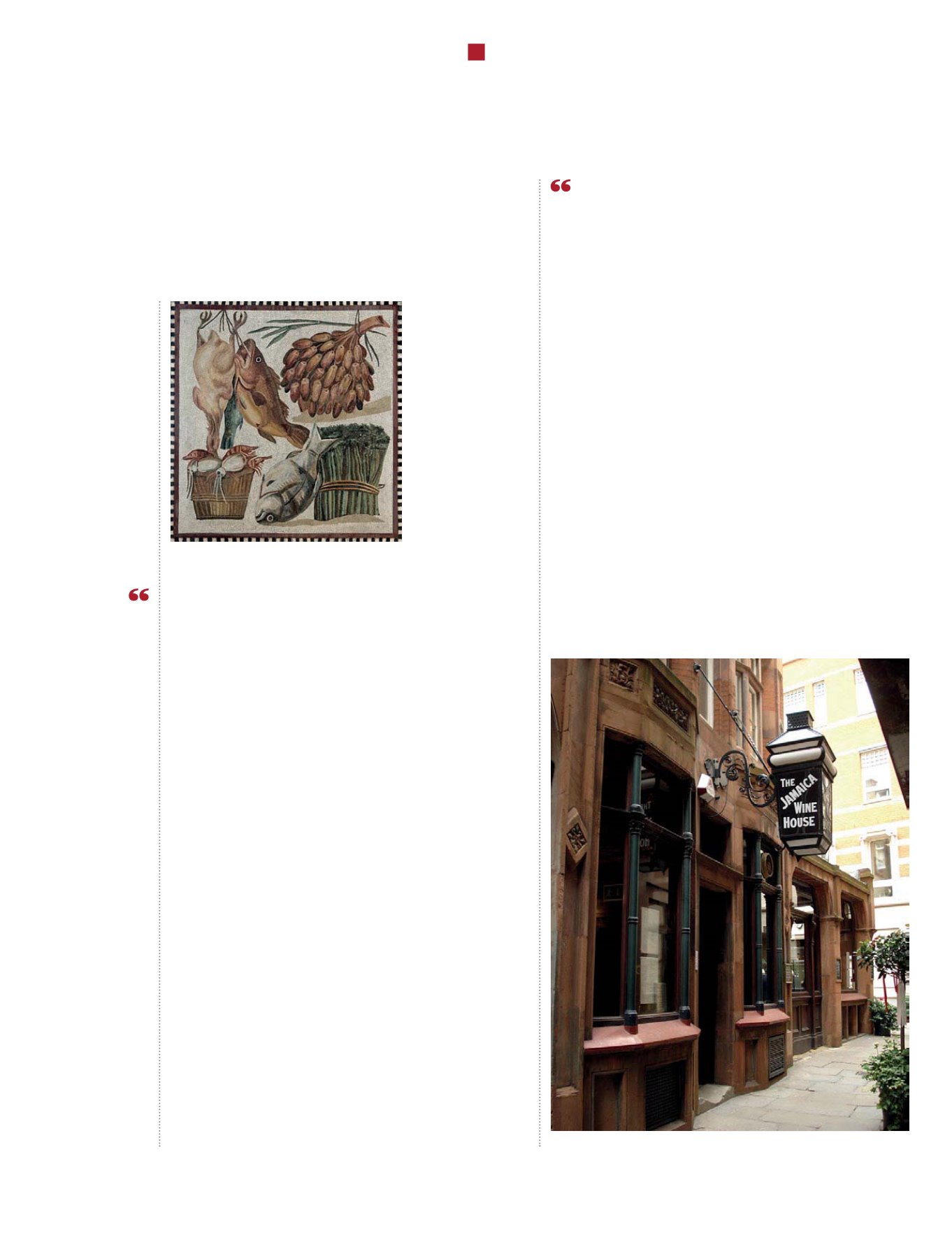

The earliest
resemblance of a
modern restaurant
scene in London
emerged in Soho
around 1685 when
the first wave of
Huguenot immigrants
arrived
The first
national
censuses did
not count
people or
houses: they
counted
hearths,
as every
medieval
home had
one
T
he foundations of London’s culinary diversity can be
traced back to 55 B.C. when the Romans first arrived
in Britain. It would be easy to think that our generation
invented street food, whereas the haul of oyster middens
found in any archaeological dig in London tells a different
story. For the Romans, who also brought taverns to
London, eating out was par for the course, whether
you were snacking on salted peas at the amphitheatre,
enjoying a pork sausage after a hard day in the Roman
baths or drinking in a Roman tavern to wash away the
taste of salted fish. Of course, the reason that street food
played such an integral part in Roman life was the simple
fact that owning a kitchen was a luxury that the common
man could not afford.
The peasant kitchen first started to emerge in medieval
times. Every family would have a central hearthstone upon
which to cook. Interestingly, the first national censuses
did not count people or houses: they counted hearths, as
every medieval home had one.
An influx of Norman immigrants following 1066 brought
new trends for high society. From this point onwards we
hear less of the Anglo-Saxon mead-hall; we were a wine
drinking country now. However, the Norman invasion
meant little for the London’s peasant class, as their eating
habits and everyday life remained broadly the same.
Meat was still out of reach for many and the animals that
were reared were far too precious to be eaten. However,
evidence shows that there was an emergence of an elite
food culture in which different meats were being cooked
and prepared with new flavourings. It was this privileged
portion of society that conjures modern imagery of
medieval banquet halls filled with feasts of exotic animals.
As this was the final time that England would be
invaded, influences on the London diet would now come
from merchants bringing back produce from far flung
locations or from immigrants arriving in England; London
often being their first port of call.
With London being a major hub for both merchants
and immigrants it wasn’t long before the city was bustling.
The earliest resemblance of a modern restaurant scene
in London emerged in Soho around 1685 when the first
wave of Huguenot immigrants arrived. These eateries
were known as French Ordinaries and provided fixed-price
meals. Just 33 years prior to this, the first coffee-house
was set up in the City of London by Pasqua Roseé, who
had acquired a taste for the drink whilst serving for a
British Levant merchant in Smyrna, Turkey. It is reported
that Roseé sold over 600 coffees per day from his stall
in St Michael’s Alley. Those who work in the City might
recognise its reincarnation as the Jamaica Wine House,
having since swapped coffee for ale, and as being adjacent
to Simpson’s Tavern, London’s oldest chophouse.
The Jamaica Wine House, originally a coffee shop
35
PAST, PRESENT, FUTURE


















